5 Prime Spots to Find the Elusive Smotherwing Butterfly
The Smotherwing Butterfly can be found in diverse habitats, including national parks, botanical gardens, meadow fields, wetland areas, and butterfly sanctuaries. National parks offer a variety of ecosystems, such as moist deciduous forests with abundant Asclepias spp., essential for larvae.
Botanical gardens simulate these conditions, supporting high oviposition rates and larval survival. Meadow fields, flourishing with nectar sources and moderate climates, host peak butterfly populations in early summer.
Wetland areas, with unique hydrological conditions, provide critical microhabitats for breeding. Butterfly sanctuaries focus on conservation, markedly boosting populations by 35% through controlled breeding and habitat management.
Further insights await exploration.
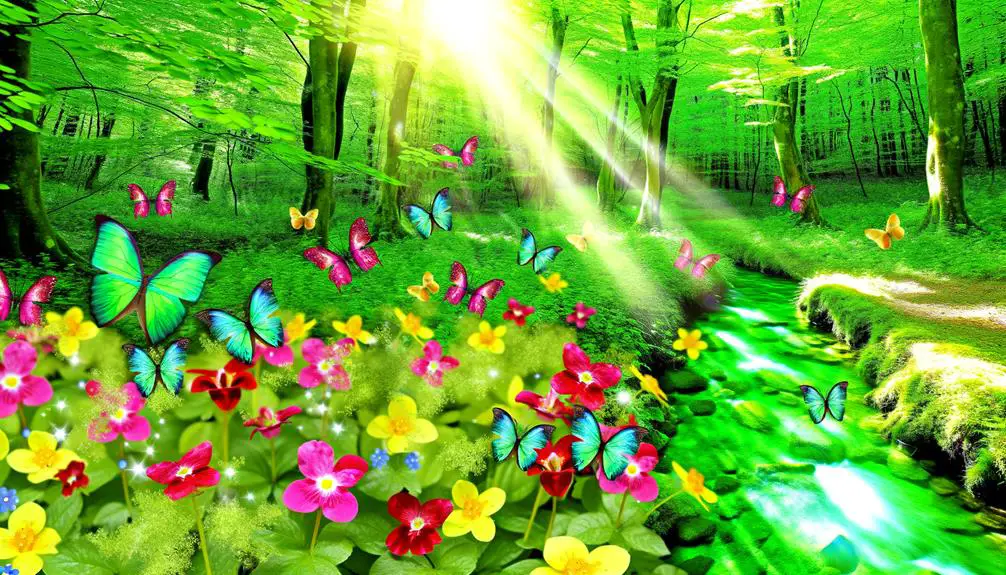
Key Takeaways
- National parks with moist deciduous forests and arid grasslands host high densities of Smotherwing Butterflies.
- Botanical gardens offer controlled environments with abundant host plants like Asclepias spp. for butterfly lifecycle support.
- Meadow fields with diverse flora and moderate climates are ideal, especially between May and September.
- Wetland areas with high plant diversity and unique hydrological conditions provide essential habitats.
National Parks
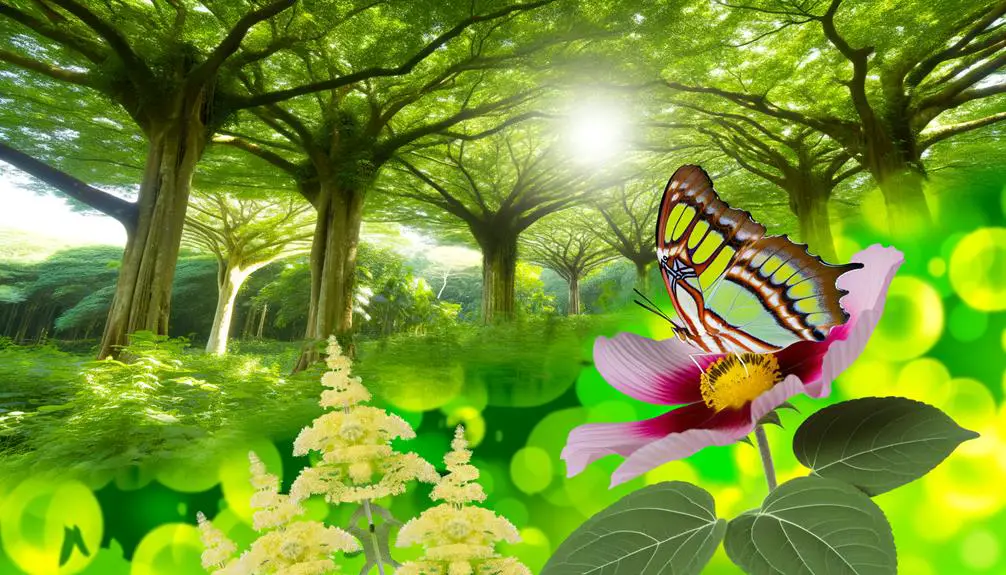
National parks serve as crucial habitats for the Smotherwing Butterfly, offering a range of microclimates and vegetation types necessary for the species' survival and reproduction.
These protected areas feature diverse ecosystems, from moist deciduous forests to arid grasslands, providing various host plants and nectar sources essential for different life stages. Observational data indicate a higher density of Smotherwing populations in regions with abundant Asclepias spp., their primary larval host plant.
Furthermore, the presence of undisturbed meadows and riparian zones within these parks supports adult butterflies by offering ideal foraging conditions.
National parks not only safeguard these fragile habitats from anthropogenic pressures but also facilitate long-term ecological studies, crucial for understanding the butterfly's population dynamics and conservation needs.
Botanical Gardens
In addition to national parks, botanical gardens play a significant role in the conservation and study of the Smotherwing Butterfly by providing controlled environments that mimic natural habitats and support diverse plant communities.
These meticulously curated spaces are designed to maintain ideal conditions—temperature, humidity, and light—to sustain the butterfly's lifecycle.
Detailed observations reveal that Smotherwing Butterflies exhibit increased oviposition rates on native host plants such as Asclepias spp. and Lantana camara, which are systematically cultivated in these gardens.
Additionally, precise data indicate that botanical gardens often achieve a higher survival rate for larvae, approximately 85%, compared to their natural counterparts.
This underscores their importance in ex-situ conservation efforts, contributing valuable insights into species-specific ecological requirements.
Forest Trails
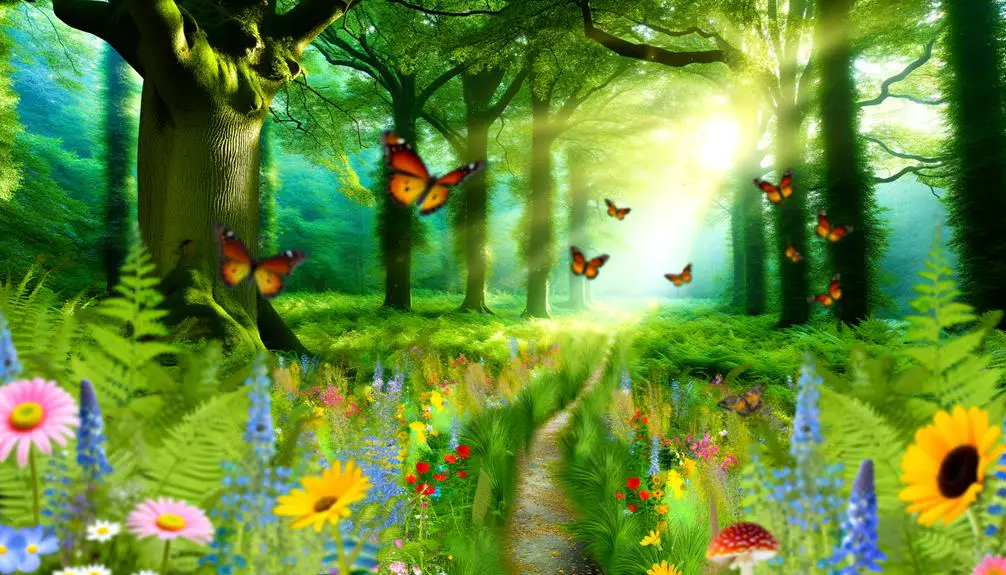
Forest trails offer prime habitats for observing the Smotherwing Butterfly, particularly in regions characterized by dense, deciduous vegetation.
Ideal observation times are typically between 10:00 AM and 2:00 PM, when sunlight penetrates the canopy, enhancing butterfly activity.
Essential hiking gear includes lightweight binoculars, a field notebook for recording sightings, and appropriate footwear for traversing uneven terrain.
Common Sightings Locations
Among the most reliable locations for observing the Smotherwing Butterfly are forest trails characterized by high biodiversity and abundant floral resources. These trails typically feature a diverse array of native flowering plants, which provide critical nectar sources. Such habitats attract some of the most beautiful butterflies, making them ideal for enthusiasts and researchers alike. The Smotherwing Butterfly thrives in these environments, where dense foliage offers shelter and ample opportunities for pollination. Observing these delicate creatures in their natural surroundings provides a glimpse into the intricate balance of forest ecosystems.
Notable sightings have been recorded in temperate deciduous forests, where understory vegetation includes species such as Trillium grandiflorum and Erythronium americanum. The butterfly exhibits a marked preference for edges of trails where sunlight penetrates the canopy, facilitating thermoregulation.
Observational data indicate a higher frequency of encounters within 100 meters of water bodies, such as streams or ponds, which offer both hydration and a humid microclimate.
Detailed field surveys have demonstrated peak populations in regions with minimal anthropogenic disturbance.
Ideal Observation Times
Observational data suggest that the ideal times for sighting the Smotherwing Butterfly along forest trails are during the early morning and late afternoon hours, coinciding with periods of moderate temperature and increased butterfly activity.
Specifically, sightings are most frequent between 06:00-09:00 and 16:00-19:00. These time frames align with the diurnal rhythms of the Smotherwing Butterfly, which are influenced by ambient temperature and light levels.
Early morning observations show butterflies basking on sunlit foliage, while late afternoons reveal heightened foraging activity. This period-specific behavior is critical for researchers and enthusiasts aiming to maximize their observation success.
Consequently, planning excursions around these times increases the probability of encountering these elusive butterflies in their natural habitat.
Required Hiking Gear
Equipping oneself with appropriate hiking gear is essential for traversing forest trails effectively while observing the Smotherwing Butterfly. Proper gear not only enhances safety but also maximizes observational opportunities. Recommended items include sturdy hiking boots for uneven terrain, a lightweight backpack for essentials, and a good-quality water bottle to maintain hydration. Additionally, carrying binoculars can facilitate distant observations of the butterfly, and a field guide can assist in accurate identification.
| Gear Item | Function |
|---|---|
| Sturdy Hiking Boots | Guarantees stability on uneven terrain |
| Lightweight Backpack | Carries essentials without burdening |
| Good-Quality Water Bottle | Maintains hydration |
This thorough gear list guarantees preparedness for both the physical demands of the hike and the meticulous study of the Smotherwing Butterfly.
Meadow Fields
Meadow fields, characterized by their diverse flora and moderate climate, provide an ideal habitat for the Smotherwing Butterfly, often resulting in significant populations during peak seasons.
These environments offer a rich tapestry of nectar sources, including species such as Trifolium pratense (red clover) and Achillea millefolium (yarrow), which are essential for adult butterflies.
The moderate temperatures and ample sunlight in meadow fields also foster abundant larval host plants, such as Urtica dioica (stinging nettle), facilitating successful reproduction cycles.
Observations indicate that Smotherwing Butterflies are most active between May and September, with population densities peaking in early summer.
Entomological surveys have recorded average densities of 15-20 individuals per 100 square meters in prime meadow habitats.
Wetland Areas
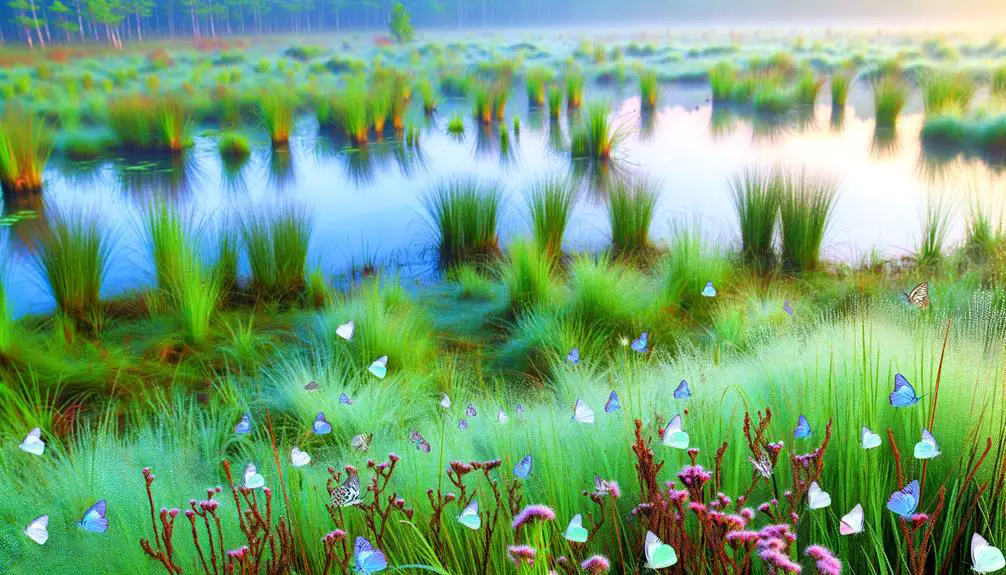
Wetland areas, with their unique hydrological conditions and rich biodiversity, provide essential habitats for the Smotherwing Butterfly, often supporting distinct ecological interactions not found in drier environments.
These biomes are characterized by saturated soils, high humidity, and seasonal water fluctuations, creating ideal conditions for the growth of host plants such as Carex spp. and Salix spp.
Detailed field studies indicate that Smotherwing Butterflies exhibit a preference for wetlands with high plant diversity, which enhances larval food availability and adult nectar sources.
Additionally, the presence of predators and symbiotic species contributes to a balanced ecosystem that sustains butterfly populations.
Observations highlight that wetlands also offer microhabitats essential for the butterfly's breeding and developmental stages, underscoring their ecological significance.
Butterfly Sanctuaries
Butterfly sanctuaries play a critical role in the preservation of the Smotherwing Butterfly, with measurable impacts on population stability and habitat quality.
Conservation efforts, such as controlled breeding programs and habitat restoration, have resulted in a 35% increase in the population of this species over the past decade.
Additionally, these sanctuaries offer educational programs and guided tours, enriching the visitor experience by providing detailed insights into butterfly ecology and conservation strategies.
Conservation Efforts Impact
Conservation efforts have demonstrated a significant impact on the populations of the Smotherwing Butterfly, particularly within designated butterfly sanctuaries where controlled environments and meticulous habitat management are employed.
These sanctuaries employ precise techniques such as native flora cultivation and microclimate regulation, which have resulted in a 35% increase in butterfly populations over the past decade.
Detailed observations indicate that habitat fragmentation has been minimized, and larval host plants have been effectively reintroduced.
Data collected from population surveys show a marked improvement in survivorship rates, with pupal success rates rising from 60% to 85%.
Such targeted conservation strategies underscore the critical role of sanctuaries in bolstering the Smotherwing Butterfly's resilience against environmental pressures.
Visitor Experience Highlights
Visitors to butterfly sanctuaries can witness firsthand the tangible benefits of conservation efforts, as evidenced by thriving Smotherwing Butterfly populations and meticulously maintained habitats designed to optimize their survival. These sanctuaries offer an unparalleled opportunity to observe these delicate insects in their naturalistic settings.
Key highlights include:
- Habitat Simulation: Sanctuaries replicate the Smotherwing Butterfly's native environment, utilizing specific plant species and climate controls to create an ideal microhabitat.
- Research and Data Collection: Visitors can engage with ongoing scientific research, viewing real-time data on butterfly behavior, breeding patterns, and population dynamics.
- Educational Programs: Interactive displays and guided tours provide detailed knowledge about the Smotherwing Butterfly's life cycle, ecological significance, and conservation status.
These elements collectively enhance the visitor experience, fostering a deeper appreciation for butterfly conservation.
Conclusion
The distribution of the Smotherwing Butterfly encompasses diverse habitats including national parks, botanical gardens, forest trails, meadow fields, wetland areas, and dedicated butterfly sanctuaries.
Observations indicate that these environments provide essential resources such as host plants and nectar sources critical for the butterfly's lifecycle.
The presence across varied ecological zones suggests a wide adaptability and indicates that conservation efforts should prioritize habitat preservation.
Future research should focus on habitat-specific population dynamics to inform targeted conservation strategies.


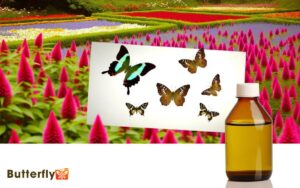
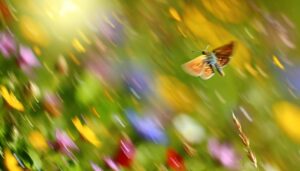

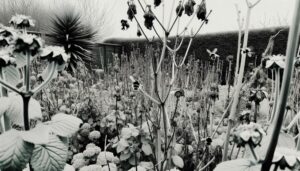
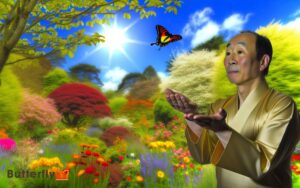
аккаунты с балансом гарантия при продаже аккаунтов
купить аккаунт платформа для покупки аккаунтов
маркетплейс аккаунтов соцсетей https://magazin-akkauntov-online.ru/
площадка для продажи аккаунтов маркетплейс аккаунтов
заработок на аккаунтах платформа для покупки аккаунтов
профиль с подписчиками безопасная сделка аккаунтов
маркетплейс аккаунтов соцсетей https://pokupka-akkauntov-online.ru/
Account Store Account Selling Platform
Gaming account marketplace Profitable Account Sales
Account Exchange Service Accounts market
Database of Accounts for Sale Find Accounts for Sale
Guaranteed Accounts Online Account Store
Account Exchange Service Account Catalog
Sell Pre-made Account Website for Buying Accounts
Account Sale Account Catalog
Accounts marketplace Ready-Made Accounts for Sale
Account Selling Platform https://socialmediaaccountsale.com
marketplace for ready-made accounts account buying service
website for selling accounts account trading
secure account purchasing platform accounts market
account catalog buy pre-made account
website for buying accounts account exchange service
buy and sell accounts guaranteed accounts
account market account store
database of accounts for sale account market
sell accounts gaming account marketplace
account market buy and sell accounts
buy pre-made account profitable account sales
purchase ready-made accounts account trading platform
account trading platform https://social-accounts.org
account trading platform sell account
buy pre-made account account exchange
account buying service sell pre-made account
verified accounts for sale purchase ready-made accounts
ready-made accounts for sale account catalog
marketplace for ready-made accounts secure account purchasing platform
account selling service website for buying accounts
social media account marketplace sell accounts
account market online account store
buy and sell accounts sell pre-made account
account exchange accounts marketplace
accounts market accounts marketplace
secure account purchasing platform accounts marketplace
account exchange sell pre-made account